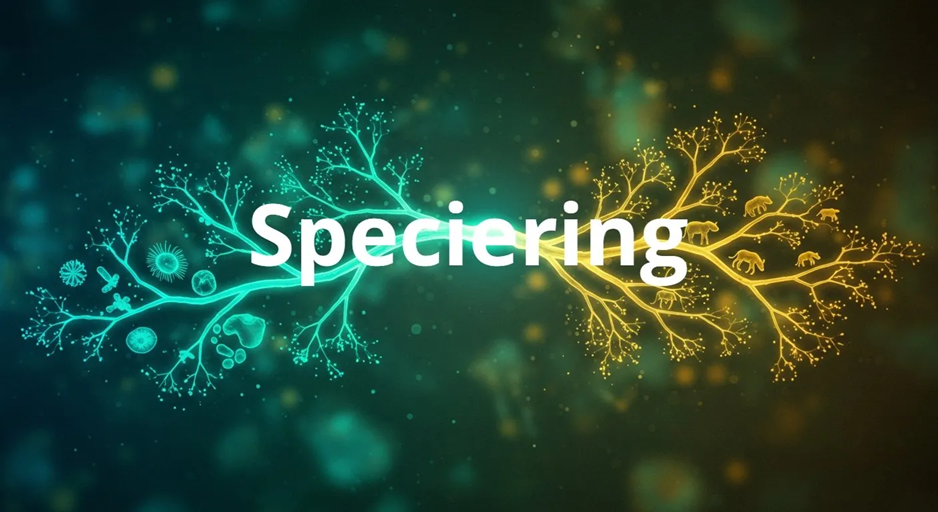Evolution is one of nature’s most fascinating forces, constantly shaping life on Earth. But how exactly do new species emerge from existing ones? This evolutionary process is known as speciering, a term rooted in the scientific concept of speciation—the process by which populations evolve to become distinct species. While the term “speciering” may sound niche or unfamiliar, it encapsulates one of the core mechanisms driving biodiversity on our planet.
In this article, we’ll unlock the powerful secrets behind speciering, explore its biological foundations, and examine how modern science continues to refine our understanding of how new life forms emerge and adapt.
What Is Speciering?
The term speciering originates from the broader concept of speciation in evolutionary biology. It refers to the process through which new species form, often due to genetic divergence, geographical isolation, environmental pressures, or reproductive barriers.
While “speciation” is the standard term in academic biology, “speciering” can be interpreted as a more dynamic, action-oriented expression of this evolutionary event.
The Science Behind Speciering
At the heart of speciering is the divergence of populations. When a single species splits into two or more genetically distinct groups that no longer interbreed, a new species is born.
Key Drivers of Speciering
There are several key mechanisms that drive speciering:
- Genetic Variation: Natural mutations and recombination introduce diversity.
- Natural Selection: Favors traits best suited to the environment.
- Geographic Isolation: Populations separated by physical barriers evolve independently.
- Reproductive Isolation: Changes in mating behavior or physiology prevent interbreeding.
- Genetic Drift: Random changes in gene frequencies, especially in small populations.
These mechanisms don’t act in isolation—they often interact over time, leading to the formation of distinct species.
Types of Speciering (Speciation)
Biologists classify speciering into several types based on how the reproductive isolation occurs. Understanding these types provides insight into the various evolutionary paths life can take.
1. Allopatric Speciering (Geographic Isolation)
This is the most well-known form of speciation. A population gets split by a physical barrier—like a mountain range, river, or distance—and evolves separately.
Example: The finches of the Galápagos Islands, studied by Charles Darwin, are classic cases of allopatric speciation.
2. Sympatric Speciering (Same Area, New Species)
In this type, new species evolve from a single ancestral species while inhabiting the same geographic region.
Example: Certain species of cichlid fish in African lakes evolve due to dietary preferences and mating behaviors—without geographic separation.
3. Parapatric Speciering (Partial Separation)
Here, populations are adjacent to each other and occasionally interbreed, but divergent selection pressures in their environments lead to gradual divergence.
4. Peripatric Speciering (Small Group Isolation)
A small population becomes isolated at the edge of a larger one. The smaller group evolves quickly due to genetic drift and strong selection pressures.
Real-World Examples of Speciering
Speciering is not just a theoretical idea—it’s a process we can observe in the fossil record, in real-time studies, and in nature.
Darwin’s Finches
These birds evolved different beak shapes to exploit different food sources, demonstrating how environmental factors drive speciering.
Apple Maggot Flies
Originally feeding on hawthorn trees, some fly populations shifted to feeding on apples. Over time, they evolved distinct mating behaviors and timing, representing sympatric speciation in action.
Ring Species: The Greenish Warbler
In areas around the Himalayas, this bird shows gradual variation in form and song across regions. Populations at the two ends of the range no longer interbreed, showing how speciering can occur in a continuum.
The Genetics Behind Speciering
Modern genomic research has provided new insights into the DNA-level changes that drive speciering. Thanks to high-throughput sequencing, scientists can now identify the specific genetic mutations and adaptations that separate one species from another.
Role of Chromosomal Changes
Sometimes, structural changes in chromosomes—like inversions or duplications—can prevent successful mating, speeding up the speciering process.
Gene Flow and Hybrid Zones
Even in the presence of some interbreeding, speciering can still occur if selective pressures are strong enough. Hybrid zones—where two species meet and mix—are natural laboratories for studying speciation.
Why Speciering Matters
Understanding how new species evolve is crucial for many reasons:
1. Biodiversity Conservation
Knowing the mechanisms of speciering helps us protect endangered species and their habitats, especially when human activity disrupts evolutionary processes.
2. Tracking Evolution in Real Time
Speciering helps scientists observe evolution as it happens, offering insights into how life adapts to rapidly changing environments.
3. Implications for Human Evolution
Studying speciering can help us understand our own evolutionary history, including how Homo sapiens diverged from other hominins.
Misconceptions About Speciering
Despite its scientific importance, there are several common misconceptions about how new species evolve:
“It Happens Overnight”
Speciering is typically a gradual process that unfolds over thousands or even millions of years. However, in some cases (especially with microbes), it can happen much faster.
“Species Are Perfectly Isolated”
Many species have fuzzy boundaries, and hybridization is more common than once thought. Evolution is not always clean and linear.
“It Only Happens in Remote Jungles”
Speciering can and does occur everywhere—from urban parks to farmlands to coral reefs. It’s a universal process shaping life in all environments.
The Future of Speciering Research
Advances in science are continuing to reshape our understanding of speciering.
CRISPR and Gene Editing
Genetic tools like CRISPR allow researchers to explore how gene changes affect development and species differentiation in real time.
AI and Evolutionary Modeling
Machine learning and AI are now being used to predict evolutionary pathways and simulate how speciering might unfold under various environmental conditions.
Climate Change and Evolution
As climate change accelerates, species are under new evolutionary pressures. We may witness speciering events—or extinction—happen faster than ever before.
Final Thoughts
Speciering is more than a scientific concept—it’s the engine that drives the diversity of life on Earth. From the birds of the Galápagos to bacteria in your gut, this natural process is constantly at work, creating new forms, functions, and futures.
Understanding speciering helps us appreciate the dynamic nature of life and gives us powerful insights into where we come from—and where life might be going next.
Frequently Asked Questions (FAQ)
Q: Is “speciering” the same as speciation?
A: Yes, “speciering” is essentially another way to refer to the process of speciation—the formation of new species—but may be used in broader or more interdisciplinary contexts.
Q: Can speciering happen quickly?
A: In some cases, such as with microorganisms or under extreme environmental pressure, speciering can happen in relatively short timeframes—sometimes within decades.
Q: How do scientists know when speciering has occurred?
A: When two populations can no longer interbreed to produce fertile offspring under natural conditions, they are generally considered separate species.
Q: Can humans cause speciering?
A: Yes, human activity such as habitat fragmentation, climate change, and selective breeding can influence the speciation process—sometimes intentionally, sometimes not.



